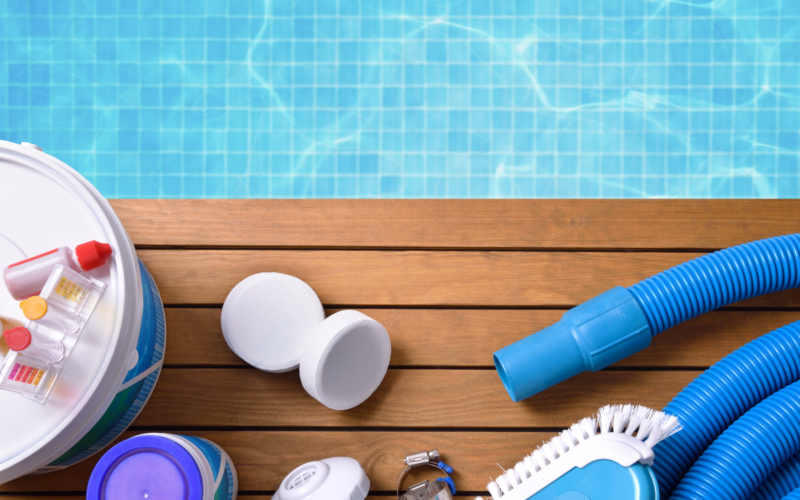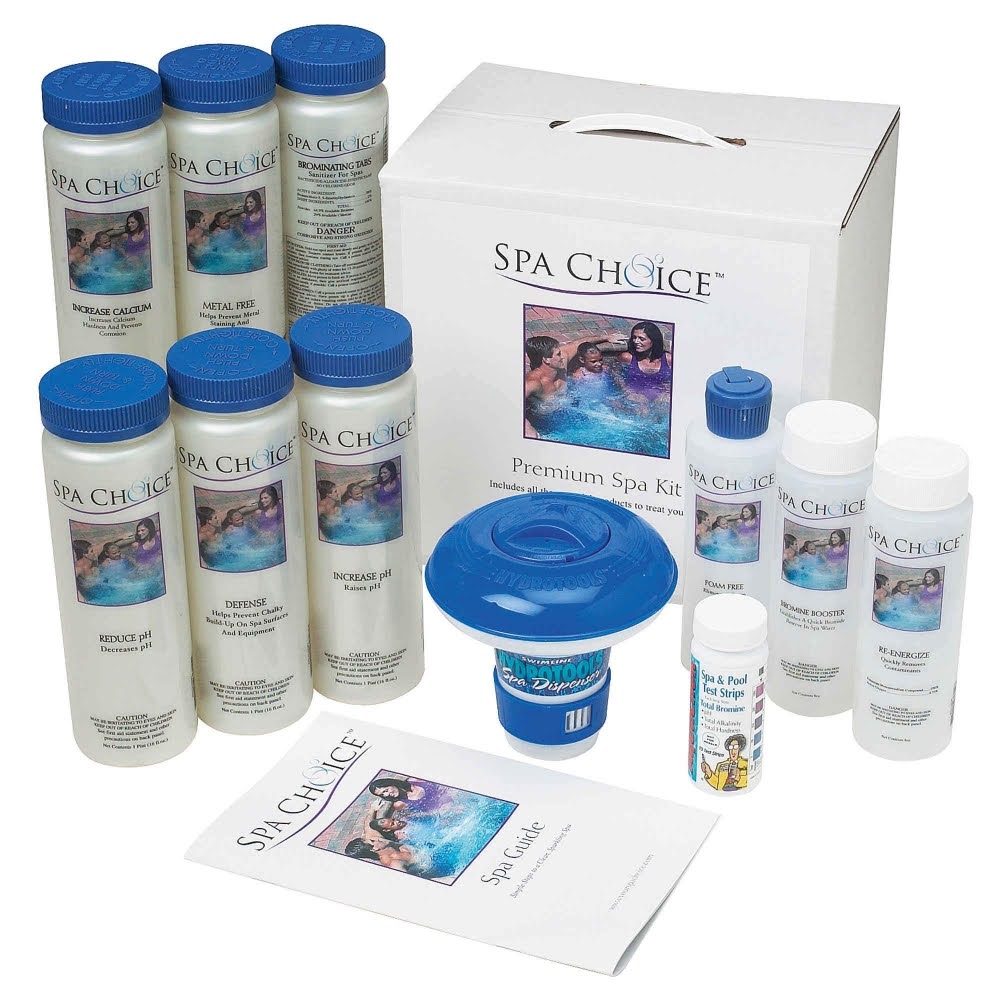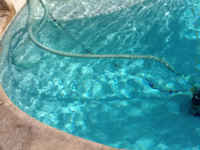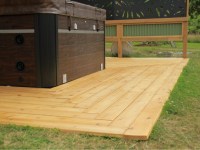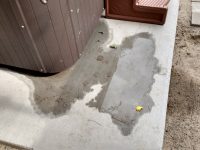If you are a newbie (our congrats!), the long list of hot tub chemicals and their combinations can make your head spin. Hot tub chemical kits promise a solution—everything you need is sold in a bundle. And such options are rather popular, judging from Amazon sales. So, we decided to figure out which chemical kits for hot tubs are the most reliable.
We start with a brief product table that contains the most important information: 3 chemical kits for hot tubs we tested and confirmed their quality and their characteristics. However, if you are new to hot tub care, we encourage you to check out the sections about the basics of water chemistry and detailed reviews. Purchasing a pre-packaged kit is certainly an option, but it’s not always an all-around solution, and there are ways to achieve the same sparkling water cheaper. Stay with us to know how!
3 Best Chemical Kits for Hot Tub Maintenance
Ranking hot tub chemical kits wasn’t a straightforward process because we had to test a bunch of different products and assess the comprehensiveness and price-to-value of each kit. Luckily, we had prior experience with some of the products (mostly AquaDoc). So, here’s our research process:
- Discard the most unreliable chemical kits based on hundreds of customer reviews.
- Test essential items (like pH balancers or test strips) from each promising brand.
- Reach out to fellow hot tub owners to learn about their experience with the selected chemicals, especially in solving common issues, for example, removing excess metals.
- Finally, rank chemical kits based on how many tasks they can perform.
Let’s now take a look at our comparison table of the 3 most promising hot tub chemical kits.
Most comprehensive chemical kit 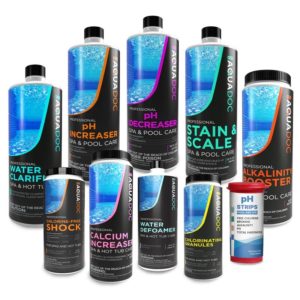 AquaDoc Hot Tub Chemicals Starter Kit |
|
review |
Largest volumes of essential chemicals 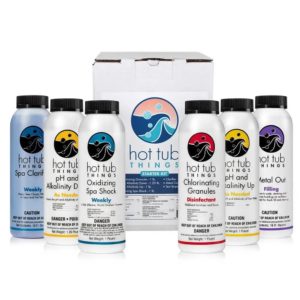 Hot Tub Things Chlorine Starter Kit |
|
review |
Best against foamy or cloudy water 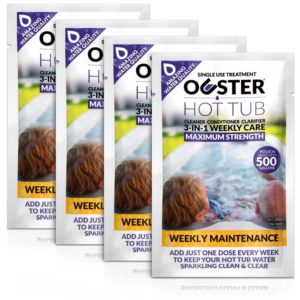 Bio Ouster 3 in 1 Chemical Kit |
|
review |
Hot Tub Chemistry Essentials: Why Is It Important?
Yes, you most certainly need to conduct regular chemical maintenance in your hot tub. There is a two-fold reason why: to ensure that the water contains no harmful bacteria and is safe for people and to keep the equipment safe.
🏥 Healthy and clean water
Unlike the regular bath you drain right after using it, the hot tub water stays in place for 3 or even 4 months. Such a humid and warm environment is welcoming for countless bacteria, some of which can pose a threat to human health. Unfortunately, it is not just about unsightly green or black algae patches.
According to the National Center for Biotechnology Information[1], without proper water balance, hot tubs can quickly become homes for bacteria and parasites such as legionella, pseudomonas, or giardia. They can cause skin rashes, eye and ear infections, stomach cramps, and other nasty issues you don’t want to deal with. The first goal of chemical maintenance is to make your hot tub inhabitable for harmful germs.
⚙️ Keeping equipment safe
The second goal of regular maintenance is to prevent corrosion and scaling of the hot tub’s components, such as pipes, pumps, and heaters. Repairing the insides of the hot tub is very costly, and it is much better to invest some money and effort into keeping the essential water metrics stable and sound.
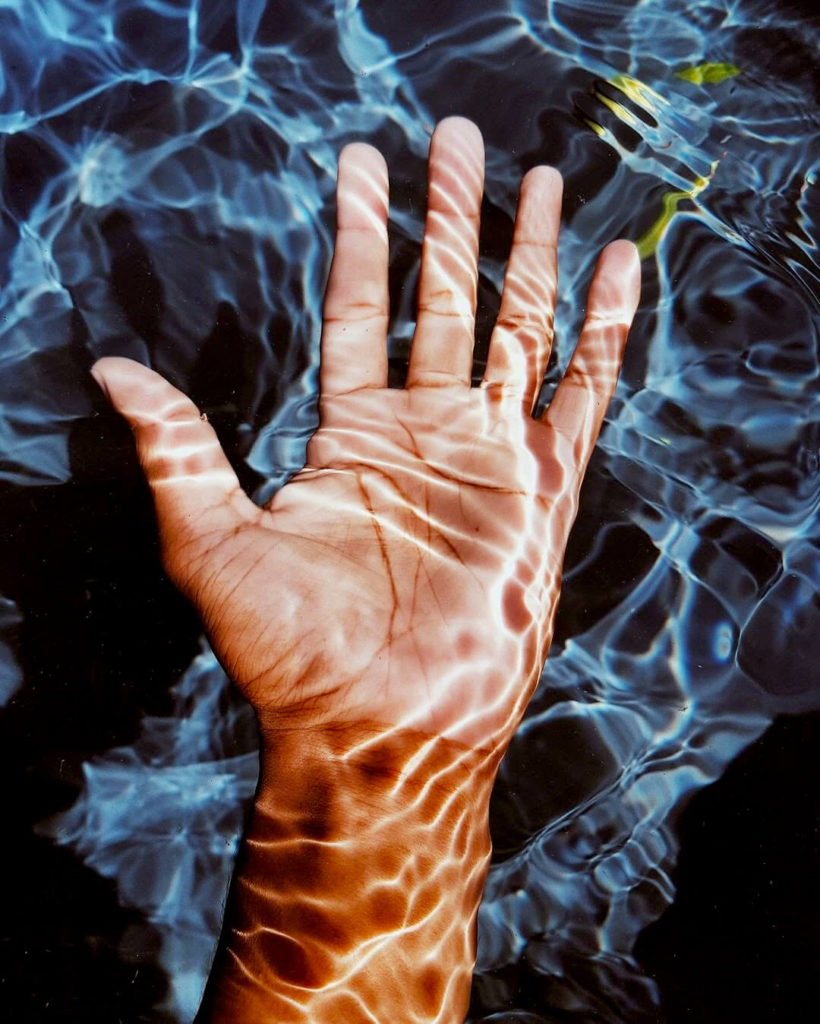
So, what are those fundamental metrics you need to keep in check?
| 80 to 120 parts per million (ppm) | Total Alkalinity acts as a buffer that stabilizes the pH level. Proper TA level prevents rapid pH fluctuations and is the first fundamental characteristic of water that you need to balance to maintain healthy water chemistry. | |
| 7.2 to 7.8 | pH level describes how acidic the water is. Maintaining the pH within the optimal range is crucial for preventing adverse skin reactions, avoiding corrosion of equipment, and ensuring the effectiveness of sanitizers. | |
| 1–3 ppm for chlorine, 2–4 ppm for bromine | Sanitizers (most often chlorine and bromine) are responsible for eliminating contaminants like bacteria or algae. | |
| 150 to 250 ppm | Calcium hardness measures the amount of dissolved calcium in the water. Proper levels prevent water from becoming too soft, which can lead to equipment corrosion, or too hard, causing scale buildup. |
What’s Inside the Best Chemical Kits: Expert Review
Now that you know the fundamentals, let’s unpack every hot tub chemical kit on the list. We’ll explain what they include, what they lack, and what tasks can these chemical kits solve. Also, we offer an in-depth look into what each specific product does and how to add it to the hot tub a bit later in the article.
AquaDoc: Most Comprehensive Hot Tub Chemicals Starter Kit
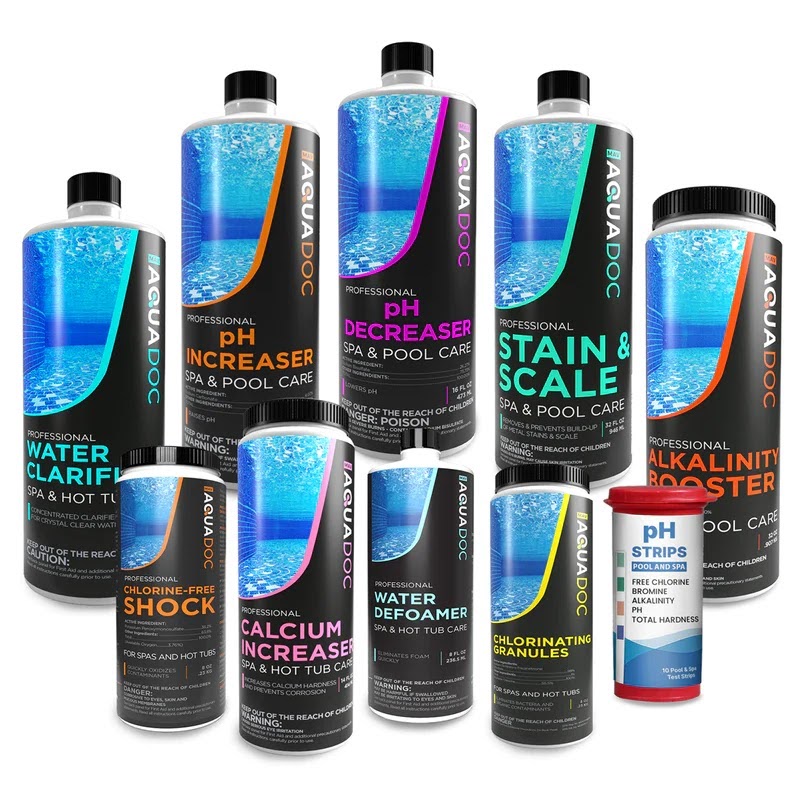
Winning category: Most comprehensive chemical kit
Pros
- Offers the largest variety of useful chemicals
- pH increaser and alkalinity booster are sold as separate products
- Includes calcium increaser and scale control most other kits don’t have
- Includes a powerful water defoamer
Cons
- There are only 10 testing strips that only measure 4 metrics
- Doesn’t include a metal remover
AquaDoc is a well-known name in the poolside chemistry market. Products made by this company have a good reputation but tend to be a little bit on the more expensive side. Their hot tub chemical kit is also a pricey but comprehensive solution, especially for a hot tub beginner.
It includes all the chemicals you need (and even more) to keep the fundamental water characteristics in check. You get tools to manage pH and alkalinity separately, which makes balancing water much easier. You also get a reliable sanitizer (chlorine granules and chlorine-free oxidizer), scale control, calcium hardness increaser, and powerful bonuses like clarifier and defoamer. But is it enough?
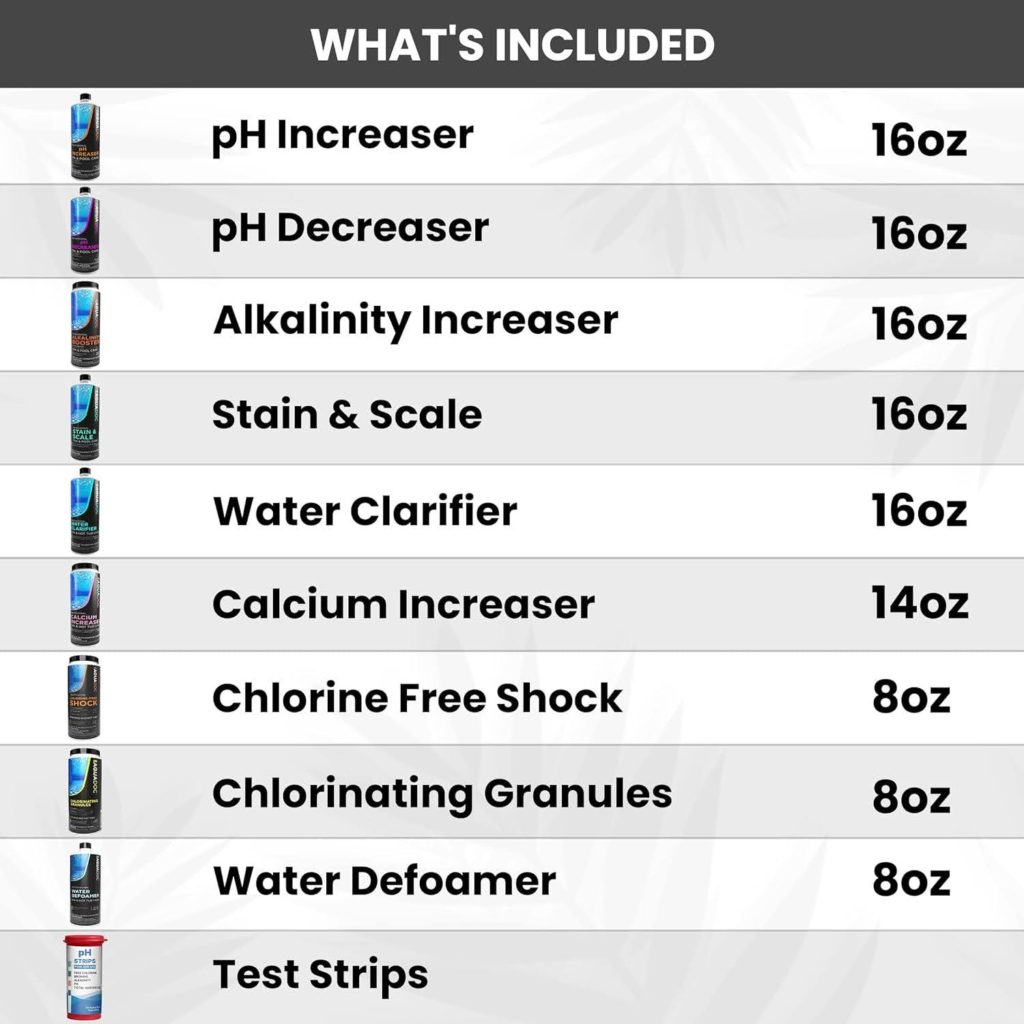
The first problem with this hot tub chemical kit is the lack of testing strips. Frankly, we were surprised to know that there were only 10 test strips in the bundle, which is not nearly enough. Too many testing strips have never been a problem, while not having enough can be extremely frustrating.
Typically, you check the water before and after adding a chemical, and if you need to add 5 different ones—10 strips will be gone in no time. Not to mention that sometimes you may want to double-check the readings. In this aspect, a bundle from Hot Tub Things is way better: it includes 50 testing strips that measure 7 characteristics instead of only 3.
Here’s a typical customer review we found on Amazon:
“We just got our first hot tub and did some research about necessary chemicals. This starter kit had everything I needed to get started, along with guidelines on how to use these chemicals to keep the water clean long-term. All the bottles and test strips were nicely packaged and safely delivered, so I’m happy with my purchase!”
— John, OH
The second problem also seems a bit odd—the bundle is sold as a starter kit, but overlooks a metal remover, which is actually rather important for the first-time user (we’ll explain why in the section about proper use of hot tub chemicals). The good thing is that AquaDoc sells a metal remover separately, and according to our experience and customer reviews, it works very well.
Despite these drawbacks, AquaDoc’s hot tub chemical kit is a great option for pool and spa beginners. However, Hot Tub Things has several advantages, so check it out.
Hot Tub Things: Largest Volumes of Essential Chemicals
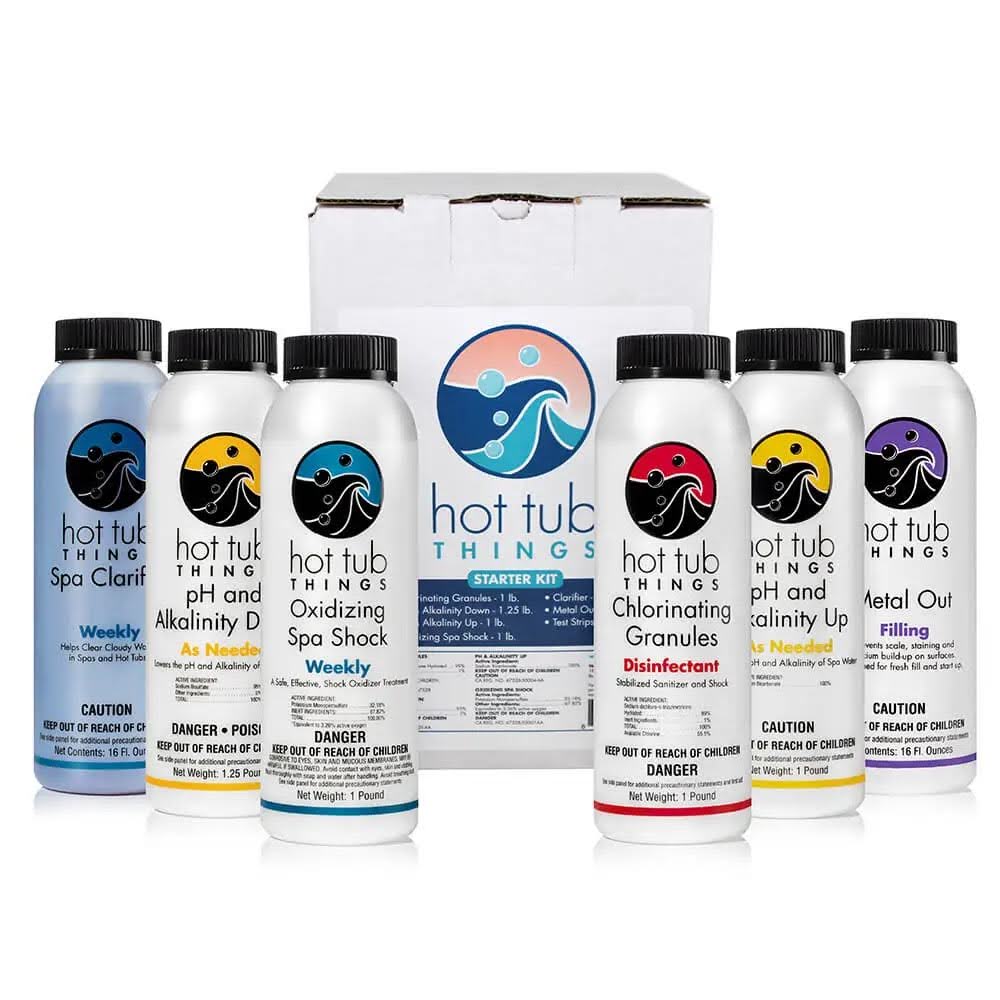
Winning category: Largest volumes of the essential chemicals
Pros
- Offers the largest packages of essential chemicals like sanitizer and oxidizer
- Includes 50 versatile and effective test strips
- Includes almost no unnecessary chemicals
- Effective and hot tub-friendly chlorine-free oxidizer (shock)
Cons
- Calcium hardness increaser and scale control are missing
- Doesn’t offer a way to adjust pH and alkalinity separately
Before this occasion, we knew very little about the Hot Tub Things brand, which seems a little bit unfair, as the hot tub chemical kit they sell is actually rather good. Unlike AquaDoc, Hot Tub Things focuses on the most essential chemicals and offers larger packages in the bundle. For example, you get 2 times more chlorine and chlorine-free oxidizer. You will have to use these chemicals under any circumstances, so, in this case, extra ounces are never useless. This chemical kit includes a metal remover, which is also a significant advantage over AquaDoc.
We wanted to place the bundle from Hot Tub Things first, but, unfortunately, it lacks a critical component, which is a calcium hardness increaser. As you learned from the section about hot tub chemistry essentials, calcium hardness is one of the core metrics that is responsible for preventing corrosion and minimizing scale build-up. Also, having separate chemicals for pH and alkalinity balance (like in AquaDoc’s kit) would simplify the fine-tuning process quite a bit.
As you can see, AquaDoc has what Hot Tub Things lacks and vice versa. In both cases, you’ll have to purchase at least several products outside the initial hot tub chemical kit. Our conclusion is—to go for AquaDoc if you are comfortable paying a bit more for additional chemicals that are not mandatory, like clarifier and defoamer (but don’t forget to buy test strips and metal remover). And if you want to focus on the essentials only—Hot Tub Things can be your choice.
Customers also praise the helpful instructions that come alongside chemicals (this one is from Amazon):
“I was a complete novice in water maintenance, and this chemical kit helped me a lot. I received all the chemicals I needed to start up my new hot tub and did everything according to the instructions. They explain weekly, monthly, and even annual maintenance! I’m really satisfied with my purchase and will buy other Hot Tub Things products for long-term care.”
— Mark, CA
Finally, let’s take a look at Bio Ouster, a popular standalone option (you’ll see why it is ‘standalone’ in a second).
Bio Ouster 3 in 1: Best Against Foamy or Cloudy Water
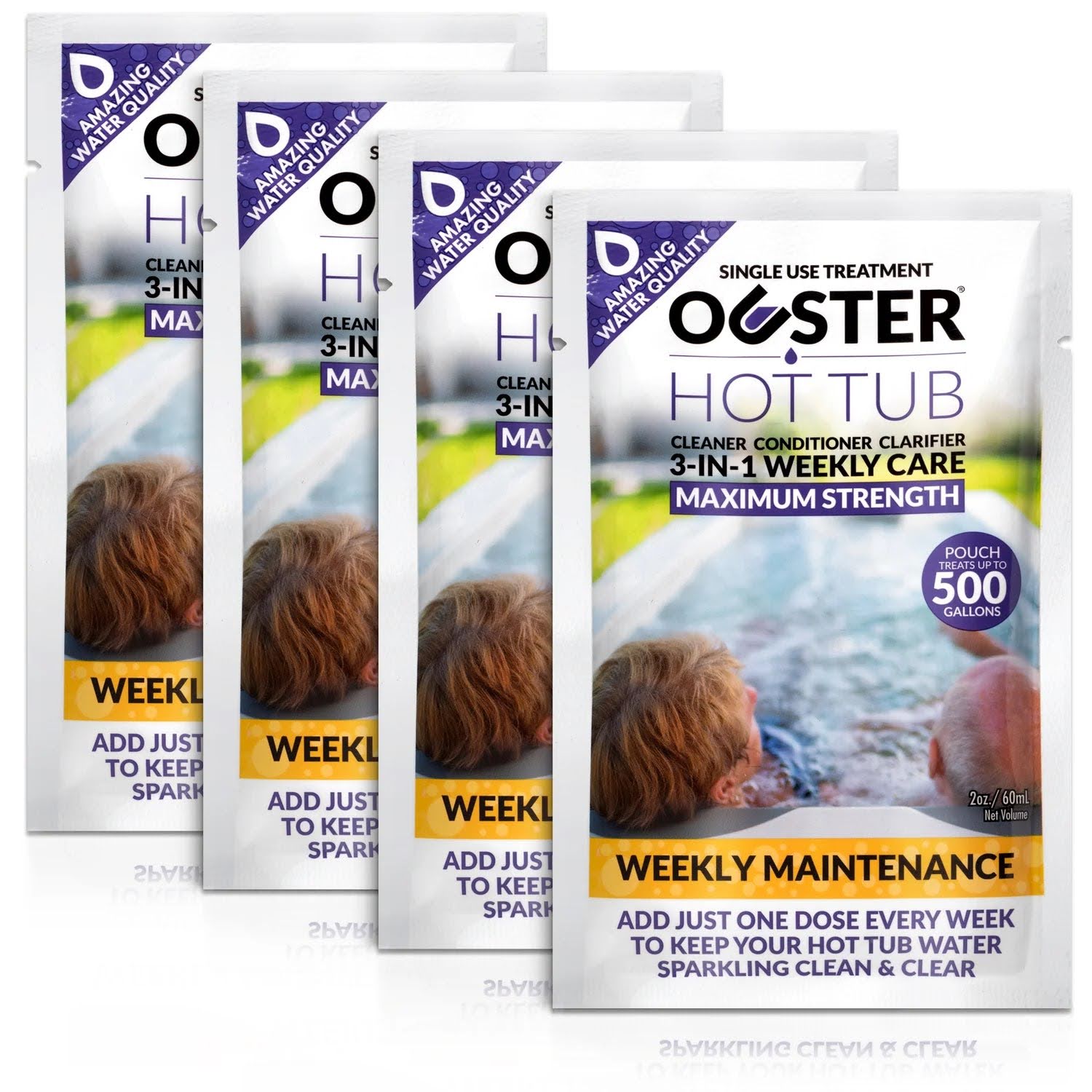
Winning category: Best against foamy or cloudy water
Pros
- Best to deal with foamy or cloudy water
- Very easy to use
- Powerful tool for deep cleaning of the hot tub
- Safe for any type of hot tub
Cons
- Doesn’t balance the fundamental water characteristics
- Weekly use is quite expensive
At first, we didn’t want to include Bio Ouster in our list because it is not really a hot tub chemical kit but a complex formula that does several things simultaneously. Bio Ouster will not fix the underlying problem (unbalanced water), but can be a very potent weapon to treat the symptoms. The ideal circumstances to use this product: your water was fine before you used it, but now it foams. Likely, you brought some residual soap from your clothes into the hot tub, and this formula can fix that. Bio Ouster is safe for any hot tub, and you can also use it to simplify the deep cleaning process, as it breaks down the annoying build-up on the jet lines and water filters.
This Amazon customer is happy with how easy it is to use Bio Ouster:
“Recently, I decided to try this hot tub cleaner, and it performed much better than expected. I used a very small amount, but it still eliminated most of the unpleasant buildup in my tub. You don’t have to struggle with proper dosage, which makes this formula very easy to use. The pleasant scent and safe-for-skin components were nice bonuses for me. I would recommend every hot tub owner have such a thing in hand!”
— William, PA
What Is the Proper Order of Adding Chemicals to Your Hot Tub?
To make the extensive list of chemicals less intimidating, we’ll place all the products from the hot tub and pool chemical kits in the order you’ll need to add them into the water. Also, we recommend reliable alternative options for every entry on the list in case you need to purchase these chemicals separately.
Testing strips will provide you with the essential baseline readings. Obviously, you can’t fix the pH or water alkalinity (or any other metric) if you don’t have any measurements to begin with. We recommend buying testing strips separately, regardless of which hot tub chemical kit you choose.
Metal remover, also known as metal out or metal sequestrant, is a chemical you only need to use when you use the hot tub for the first time. This chemical binds to metals in the water to prevent staining and discoloration. Don’t confuse it with scale control, as it works mostly against calcium build-up (not so much against metals) and should be added weekly. Here’s a reliable metal remover by AquaDoc, which is, oddly enough, missing from their chemical kit.
- pH and total alkalinity balancers
This part is fairly simple: you do the measurements with test strips, and if your pH is below 7.2, you add a pH increaser. Conversely, if the pH level is 7.8 or higher—you use pH decreaser. The same goes for total alkalinity (TA)—you need to use an alkalinity booster, if it is below 80 ppm, and pH and alkalinity decrease if it is above 120 ppm. Keep in mind that pH and TA levels are connected, so raising TA will also raise pH (at least slightly).
Chemical kits for hot tubs usually include a chlorine-based sanitizer because it is cheaper and slightly stronger than bromine. Both AquaDoc and Hot Tub Things use effective chlorine granules in their bundles. You should add chlorine to the hot tub weekly or more often, depending on how often you use the hot tub. At the same time, bromine also has several advantages, and we discuss the most important one in the expert tips section.
After you sanitize the water, you’ll need to use test strips again to check the calcium hardness level. The ideal range for calcium hardness is between 150 and 250 ppm. You need to add a calcium increaser gradually because if this level gets too high, you won’t be able to drop it anymore and will need to drain the water.
Oxidizer, also known as shock, is a chemical that breaks down organic contaminants and helps your sanitizer stay effective. Again, AquaDoc and Hot Tub Things share the same opinion and offer a chlorine-free shock. This is the first chemical on the list that will be required for the weekly maintenance, but not to start the hot tub. Think of oxidizer as a support for the sanitizer—there is no need for it before you actually use the hot tub several times.
A clarifier is not a mandatory chemical to have. As the name suggests, you only need to use it if the water gets cloudy. Several hot tub owners we talked to mentioned that they use a clarifier to complement a chlorine-free shock, but it is more of an exception, not a rule.
Scale control (unlike Hot Tub Things, AquaDoc includes it) helps you prevent the formation of mineral deposits in hot tubs. These deposits can cause cloudy water, reduce the efficiency of heaters, and damage the internal hot tub components. Of all ‘extra’ chemicals, this is probably the most useful one.
- Defoamer
If you keep your hot tub water balanced, it might never need a defoamer. But if you end up with loads of unsightly foam that doesn’t go away—defoamer can help. In fact, Bio Ouster is a great option just for such situations.
This was a brief run-down on every product inside the most reliable chemical kits for hot tubs. As you can see, the step-by-step breakdown makes the whole process much less intimidating. And here are 5 helpful tips from Peter Rossi that will make your water maintenance much more simple and effective.
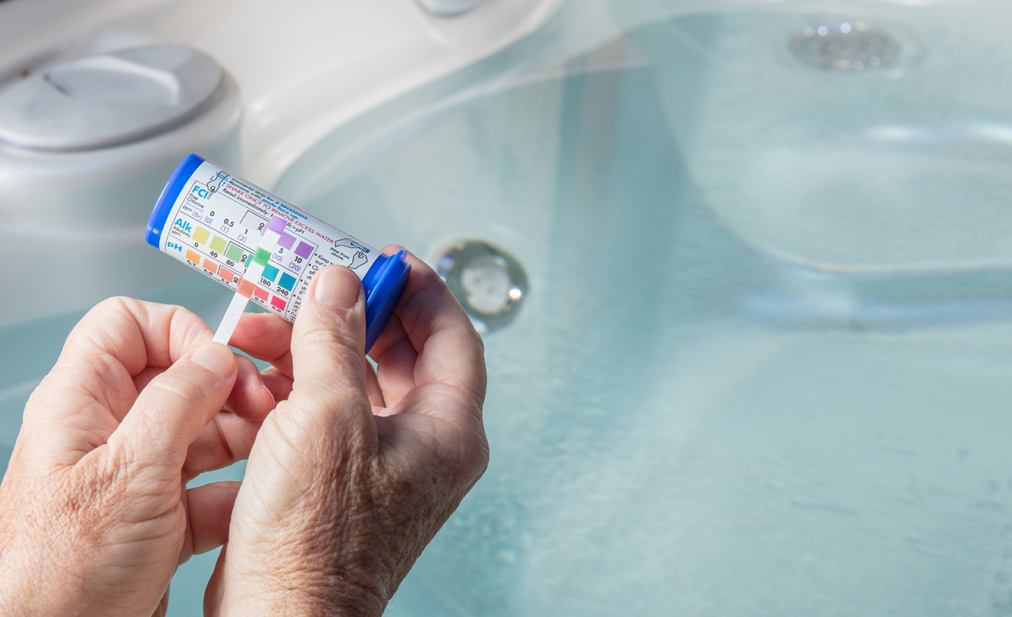
5 Expert Tips To Make Maintenance Cheaper and Safer
🙅 Never mix chemicals
Mixing chemicals is not a great idea. You should not do it in the water or outside the hot tub. Trying to save time in such a way will greatly reduce the effectiveness and might even be dangerous. You need to wait at least 20 minutes after adding each chemical to allow it to dissolve in the water fully.
🌊 Keep water jets running when adding chemicals
Keeping water jets running when you add chemicals to the water has several benefits. Chemicals dissolve faster and distribute more equally, allowing you to avoid localized concentrations that could damage the hot tub surface and equipment. The exception to this is pH decreaser—it is more effective when the water remains still.
☂️ Allow chemicals to off-gas by opening the cover
Closing the hot tub cover immediately after adding chemicals is not a good idea. It will trap dangerous chemical fumes inside the hot tub. This doesn’t increase the effectiveness of the treatment but will cause significant damage to the cover or acrylic shell.
🚰 Don’t forget to clean your filters
If your hot tub water is contaminated, so is the filter. Ignoring the need to clean the filter is a very common mistake that costs hot tub owners hundreds of dollars. If your water got foamy because of the residual soap brought by someone’s swimsuit, the most reliable way to solve the issue is by using a defoamer or Bio Ouster formula in the tub itself and rinsing the water filter. You also need to clean both the shell and the filter if you deal with algae or significant scale build-up.
👼 If you have kids, consider switching to bromine sanitizer
The choice of a sanitizer has always been a heated debate. On one hand, chlorine is cheaper and more aggressive at dealing with contaminants. On the other, bromine is more expensive but less harsh on the human skin and doesn’t have a strong smell. Kids are more sensitive to chlorine[2], so if chlorine-based sanitizer doesn’t work well for your family—drain the water, repeat the start-up process, and use bromine. Here’s the most reliable bromine-based hot tub chemical kit:
Why Chemical Kits Aren’t Always All-Round Solutions?
We reviewed the best hot tub chemical kits on the market. But would Peter Rossi buy any of them? Well, the answer would really depend on the price. If the bundle is discounted, then—yes, otherwise—no. The reason for it is actually very simple: an experienced hot tub owner only needs to refill the supply of the most frequently used items (chlorine, oxidizer, and test strips). For example, knowing my water quality, I don’t need a lot of pH decrease since I usually deal with lower pH levels anyway.
That being said, if you are a beginner, it is better to have a complete arsenal from a bundle. Chemicals like clarifier and defoamer put you on the safer side, and you’ll be able to fix the immediate problem even if your water fundamentals are not perfect. Over time, you’ll figure out what products your hot tub needs the most and supply them separately.
Summary
Chemical maintenance is crucial to keep the water clean and healthy and the equipment safe. You can buy everything you need separately, but if you are a beginner, buying a hot tub chemical kit is a reliable and straightforward option. We reviewed two bundle options, each having some pros and cons, and a standalone water cleansing option. We recommend the Hot Tub Things bundle if you want to focus on the core items, like sanitizer and shock, and if you want to get a more comprehensive and versatile option—go for AquaDoc.
We explained the purpose of every chemical on the list and shared 5 insightful recommendations from Peter Rossi that will help you understand the whole maintenance process better. We are honest with our readers—hot tub chemical kits are not perfect, and we explained why an experienced hot tub owner might want to purchase everything separately.
We hope this article answers the questions you have and will help you choose the most reliable hot tub chemical kit and fill the gaps in your water care arsenal!
FAQ
🏆 What Is the Best Chemical Start-up Kit?
AquaDoc offers the most comprehensive hot tub chemical kit that includes several optional but useful chemicals. Hot Tub Things focuses more on the core chemicals and offers larger chlorine and shock packages. Also, Bio-Ouster is not really a chemical kit but a powerful water-cleansing option.
🧑🔬 What Chemicals Do I Need To Start up a Hot Tub?
To start a hot tub, you need to test the water with testing strips, add metal remover, balance the pH and alkalinity levels, add sanitizer, and finally adjust the calcium hardness increaser.
🧐 Is It a Good Idea To Buy a Pre-Package Hot Tub Chemical Kit?
A hot tub chemical kit will not be a perfect solution for an experienced hot tub owner, regardless of the brand. But if you are a first-timer, purchasing all the chemicals in a bundle can save you time and minimize the confusion of buying everything separately.
⚗️ How Should I Add Chemicals to My Hot Tub?
In this article, we explain the order in which you need to add chemicals to your hot tub and give several helpful recommendations on how to make the maintenance process more effective.
